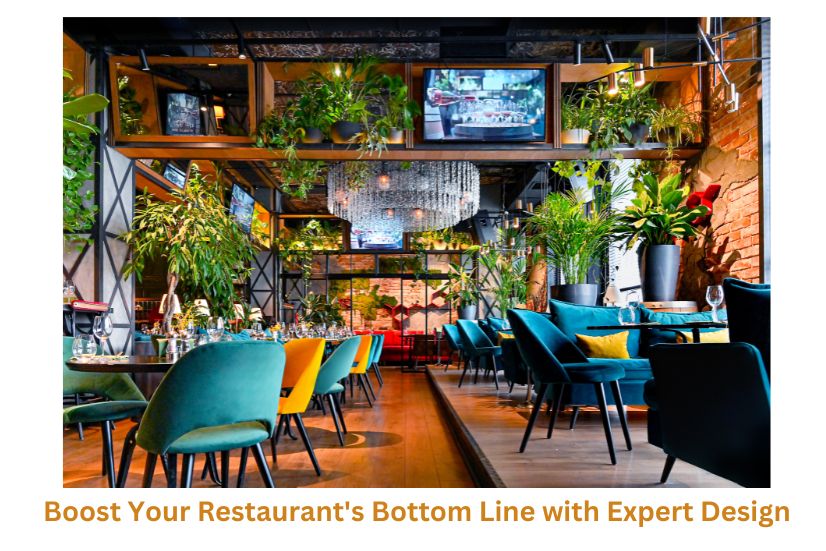Investing in restaurant design might seem like a luxury, but it’s actually a strategic move that can significantly impact your bottom line. A well-designed space can attract more customers, increase average spending, and improve operational efficiency – all of which contribute to a healthier profit margin.

The Impact of Design on Revenue
A well-crafted restaurant design is more than just aesthetics; it’s a strategic investment that directly influences your bottom line. By creating an exceptional dining experience, attracting new customers, and solidifying your brand identity, you can significantly boost your restaurant’s revenue.
Enhanced Customer Experience
A visually appealing and comfortable space fosters a positive dining experience, encouraging customers to linger longer and spend more. When guests feel relaxed and enjoy their surroundings, they are more likely to order additional items, such as appetizers, desserts, or alcoholic beverages. Moreover, a pleasant atmosphere can lead to increased customer satisfaction, resulting in positive word-of-mouth recommendations and repeat visits.
Increased Foot Traffic
A distinctive and inviting restaurant exterior is essential for attracting new customers. A well-planned interior design can further optimize the flow of people, creating a welcoming atmosphere that encourages exploration. By strategically placing key elements like the host stand, bar, and high-traffic areas, you can guide customers through the space and maximize visibility of your menu offerings. A thoughtfully designed layout can also accommodate various group sizes and dining preferences, ensuring that all customers feel comfortable and valued.
Stronger Brand Identity
A cohesive design that reflects your restaurant’s concept is crucial for building a strong brand identity. By creating a visually compelling and consistent environment, you can reinforce your restaurant’s personality and values. A well-executed design can evoke specific emotions and create a memorable dining experience, which can lead to increased customer loyalty and advocacy. When customers feel a connection to your brand, they are more likely to choose your restaurant over competitors, even if they have to pay a premium.
By investing in a thoughtfully designed restaurant space, you can create a powerful tool for driving revenue and building a successful business.
Operational Efficiency and Cost Savings
- Optimized Space Utilization: Effective space planning maximizes seating capacity without compromising guest comfort or staff efficiency.
- Improved Workflow: A well-designed kitchen and dining area can streamline operations, reduce errors, and improve staff productivity.
- Energy Efficiency: Incorporating sustainable design elements can lead to lower energy costs and a reduced environmental impact.
The ROI of Restaurant Design
While the initial investment in restaurant design can be significant, the long-term benefits often outweigh the costs. Studies have shown that restaurants with well-designed interiors can achieve higher sales and profit margins compared to those with outdated or poorly planned spaces.
Quantifying the ROI can be challenging, but consider these factors:
- Increased revenue: Calculate the potential increase in sales based on factors like average spend, customer turnover, and repeat business.
- Operational savings: Estimate the potential savings from improved efficiency, reduced energy consumption, and lower staff turnover.
- Customer lifetime value: Assess the impact of a strong brand identity and customer loyalty on long-term revenue.
Case Studies
To illustrate the impact of restaurant design on the bottom line, consider these real-world examples:
- Example 1: A casual dining restaurant that invested in a modern, open-plan design experienced a 20% increase in average spending per customer due to a more inviting atmosphere and extended dwell time.
- Example 2: A fine dining establishment that prioritized kitchen efficiency and ergonomic design reduced food waste by 15% and improved staff satisfaction, leading to higher productivity and lower turnover costs.
Remember: The success of your restaurant depends on a combination of factors, including food quality, service, and marketing. However, investing in a well-designed space can provide a solid foundation for building a profitable business.
By carefully considering the design elements that align with your restaurant’s concept and target audience, you can create a space that not only delights your customers but also delivers a strong return on investment.
